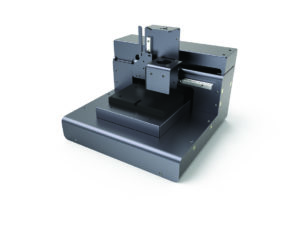By Mark Galatis, Engineering Manager, DFM Specialist, Sheet Metal, Protolabs
To get the most out of your sheet metal design, keep a few key tips in mind.
Managing tolerances
Precision sheet metal has many variables that effect tolerance, shape, size, and features. For example, sheet thickness tolerances from a mill can vary from +/-.0035 on the most used gages, which are 14-20 gage (.074” – .036”) to +/-.0075 on the thicker gages.
A common issue to watch is designs with zero clearance between parts. This can create a tolerance stack up, resulting in parts that will not fit during assembly. When assemblies are modeled, the tolerance of the parts should be accounted for in the spacing of the parts to be sure they will fit together when assembled.
 Tooling considerations
Tooling considerations
The tooling required to make a part can limit that part’s shape. Conventional press-brake tooling, for example, allows for precision straight-line bends that can be fitted to almost any length and are typically used on most fabricated sheet metal parts. Keeping designs in this shape area allows for lowest cost and fastest manufacturing times. This holds true for features like round embosses, bridge lances, countersinks, extrusions, or other features. These can be typically done in a punch press and every effort should be made to stay with standard sizes when possible.
Precision sheet metal parts and machined parts are different. When designing precision sheet metal parts, note that, because of the multiple processes encompassed in making the parts, these parts are very different from a machined part in terms of what can be manufactured and what tolerances can be held.
Dealing with bends
If a design calls for bent flanges, they should have a minimum outside-to-outside dimension of four material thicknesses. This allows the use of standard tools and forming processes that provide the lowest costs and lead times. Special tools or special bending processes slow a part’s speed through a shop and typically add significant cost to a part.
Features like holes or slots should be three times material thickness from the bend radius to the edge of the hole or slot to form correctly.
When adding features to a bent wall, make the edges at least three material thicknesses from the bend radius or these edges will not form correctly. While it may be OK to the designer that the edge deforms, it can cause problems to an operator trying to form that bend making it hard to control and hold dimension consistently. If deforming holes or slot edges are ok, these features should be cut around the bend for best forming practices.
Offsets should be a minimum material thickness in height and in .030” increments thereafter. When designing offset bends or jog bends in Solidworks, designers should have them at a minimum material thickness in height and understand that fabrication of offsets of this nature is done in a press brake with offset tools that perform both bends at the same time. Hole and edge requirements regarding the distance from these bends still apply. Offset bends should also be straight and not have curves, as this would require stamping or custom tooling that most shops avoid. Standard offset tools will typically follow in .060” increments.
Lazy offsets
When designing offsets, designers should expect that the angles will be less than 90 degrees on both bends.
Small offsets will typically be manufactured as “lazy” offsets. This generally means that each bend’s angle in the offset is less than 90 degrees. Lazy offsets help fabricators hold odd heights when needed and the fabricators will usually acknowledge the offsets will be lazy on their quote. As the height of the offset increases, the angle will draw closer to 90 degrees. At a height of four times material thickness or greater, a manufacturer will make the offset in two bends if an offset tool is not available at that height for the chosen material thickness.
The big finish
Once the part is made, the next consideration is finishing. Powder coating is a good finishing option for steel or aluminum components.
Powder coating sheet metal parts is one of the most durable finishing options available to customers. It offers a range of colors and textures to choose from. When applied in a manner that covers all exposed metal surfaces, it is good at preventing oxidation. Powder coating can give a thick, dense finish that is typically more durable and longer lasting than traditional paint options with a longer life expectancy as well. Powder-coated surfaces are more resistant to scratches, fade out, flaking, and chipping than other finishes.
Zinc plating is the electrodeposition of a thin coating of zinc metal onto the surface of another metal, like sheet metal, to create a physical barrier that prevents rust from reaching the original metal part. One of the most important benefits of zinc plating is that it significantly increases the corrosion resistance of the part by forming a barrier that actually serves as a sacrificial coating, meaning that the zinc coating will corrode instead of the original metal that it protects. It is also a cost-effective coating that is more eco-friendly than the cadmium coatings used in the past.
Chromate conversion coating of aluminum is a type of coating that is applied to passivate aluminum alloys, which will slow the formation of white corrosion. Chromate conversion coatings are typically used on electronic cabinet or component parts, and it can be commonly called chemical film. It also makes a good primer for aluminum parts to be painted.
With these tips, designers can prototype or produce a more cost-efficient part.
Protolabs
www.protolabs.com
Filed Under: Uncategorized




